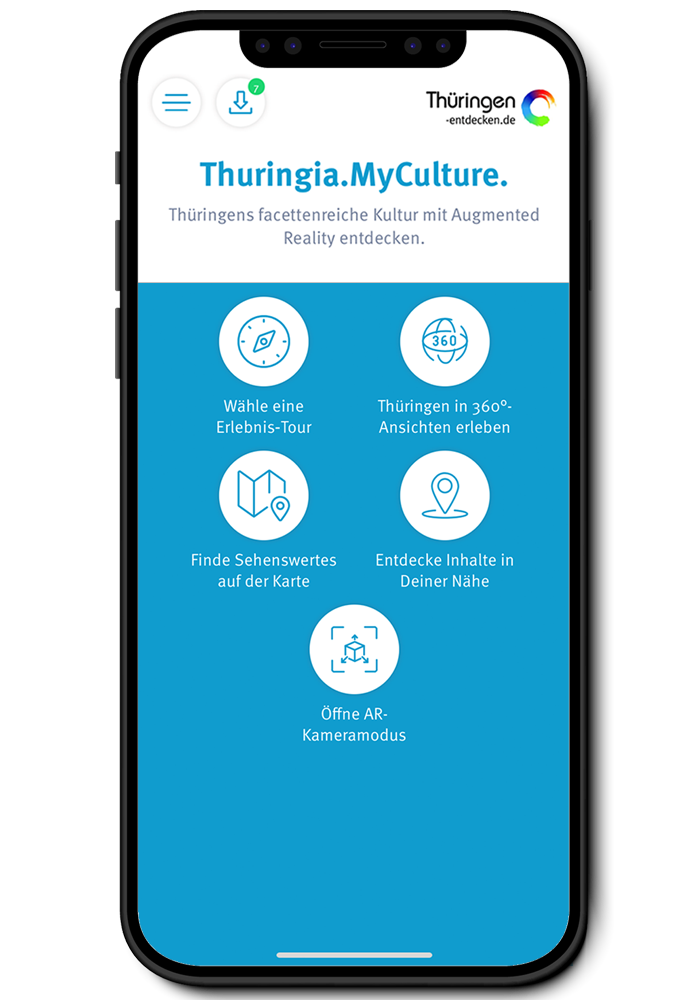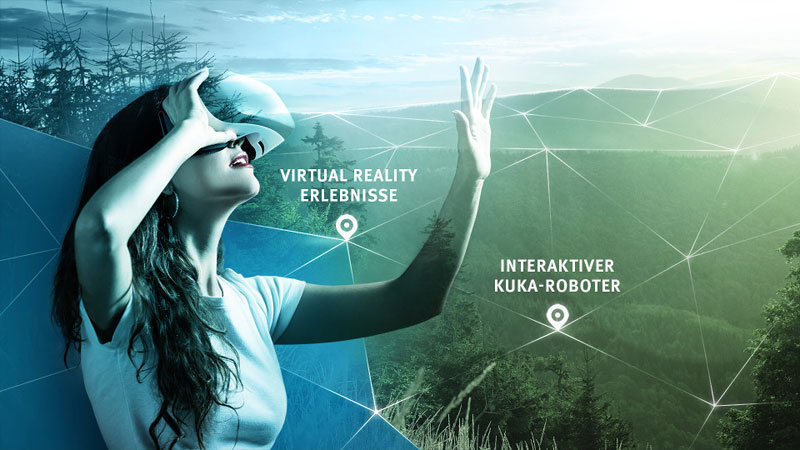Visit the state capital Erfurt and go on a virtual discovery tour through Thuringia.
Modernism cubed
Exploring the Bauhaus-Museum Weimar
It is one of the most modern new museum buildings in Germany, and with just under 268,000 visitors over a nine-month period in 2019 it’s now also the most popular museum in Weimar. The Bauhaus-Museum Weimar is distinguished by its remarkable architecture, which doesn’t just engage the locals, but also the media and visitors from around the world. When you’re actually standing right in front of it you could be forgiven for thinking it’s quite boxy and simple, typical Bauhaus style. A bit like IKEA. But is that really all there is to it?
Form follows function
The new Bauhaus-Museum Weimar is an impressive cubic structure, which fits very well into the new ‘Modernism Quarter’ that has been created between the centre of Weimar and the area around the train station. The building makes do with few windows and doors, to maximise functionality. A museum always poses very particular architectural challenges. This grey concrete cube – for some endearing, for others not so much – does also have its lighter moments. At night, for example, when the exterior is illuminated by thin strips of LEDs. And during the day, once you’ve reached the foyer through the exceptionally tall glass-fronted entrance. The foyer has been designed to be bright and spacious. The view opens upwards to interconnecting double storeys and also straight ahead – towards a stylish reception area where visitors can get their bearings swiftly using large screens, which prevents it from getting too crowded. At the far end, a large glass panel surprises with a view out onto green spaces.
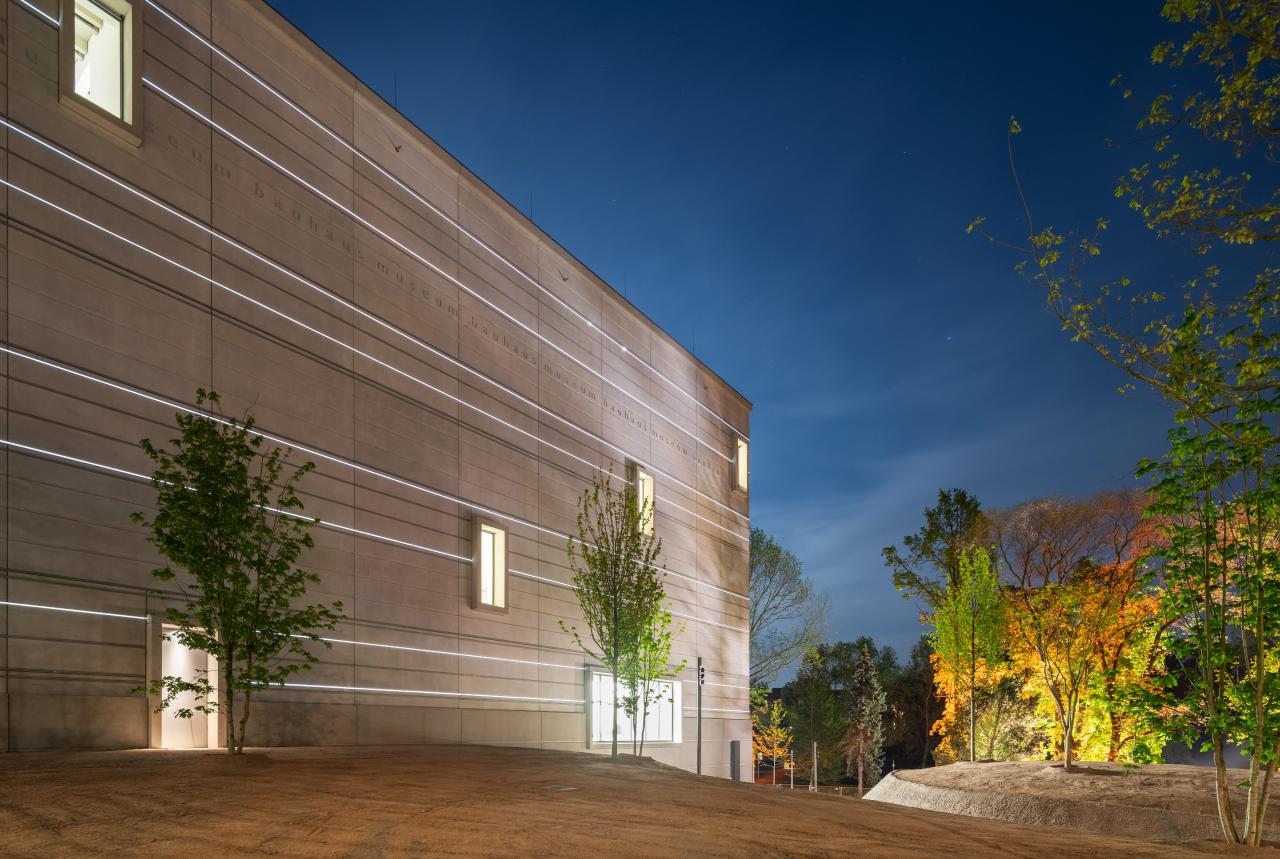
Bauhaus-Museum Weimar in the evening ©Thomas Müller, Klassik Stiftung Weimar
World-class exhibits
The Weimar+ smartphone app guides visitors through the building and the various sections on three floors. The exhibition aims to answer Walter Gropius’ question, "How do we want to live together?" across a total of 2,250 square metres of floorspace. Every visitor explores the exhibition at their own pace. On display are remarkable exhibits such as Peter Keler’s colourful cradle and the iconic Barcelona chair by Ludwig Mies van de Rohe. Klassik Stiftung Weimar’s Bauhaus collection comprises around 13,000 pieces these days. From the Wagenfeld lamp to Marcel Breuer’s slatted chair and Wassily Kandinsky’s paintings, the relevance to our contemporary lives is highlighted using a playful yet abstract multimedia approach.
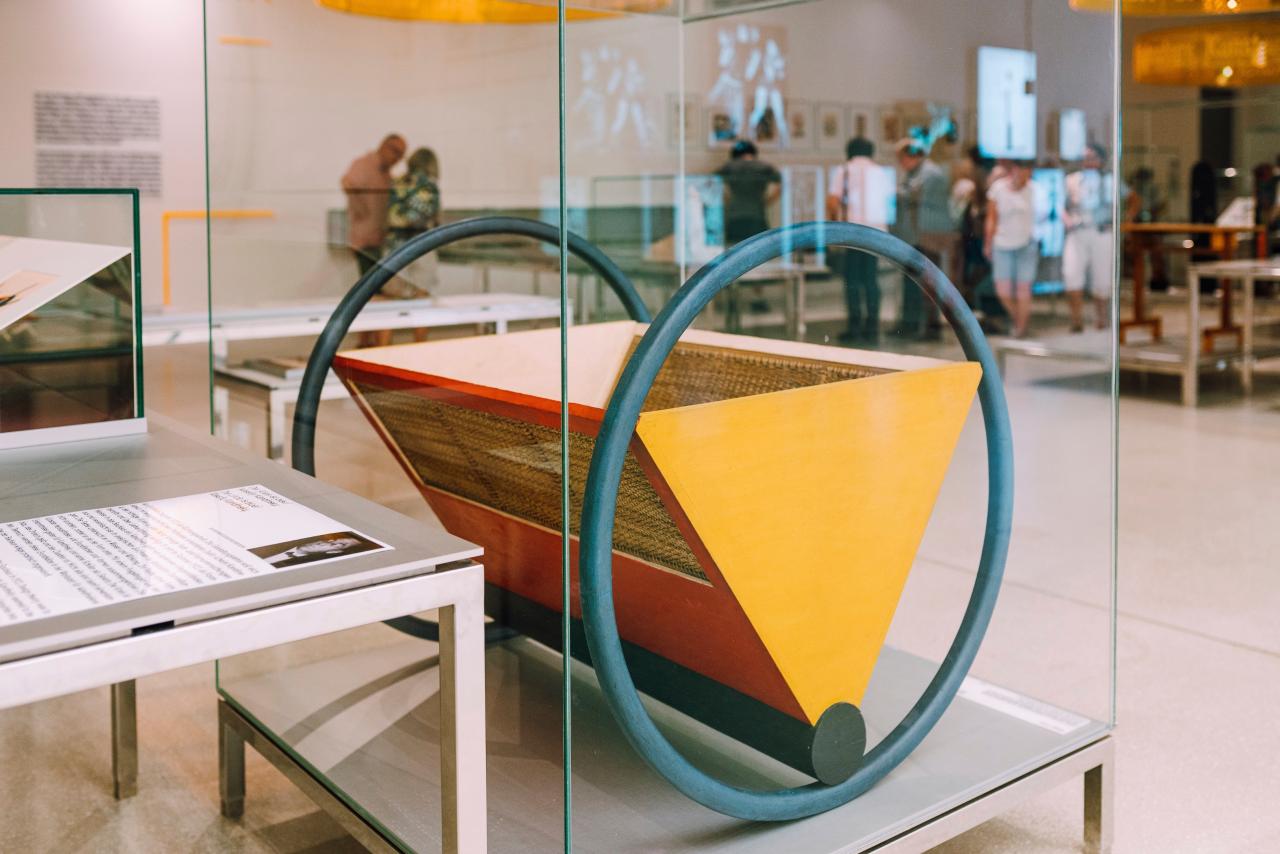
Peter Keler, Cradle (1922) at the Bauhaus-Museum Weimar ©Alexander Burzik, Klassik Stiftung Weimar
Total immersion: exploring with Weimar+ smartphone app
The airy gaps between the floors and the individual sections reinforce the concept of telling the Bauhaus story based on themes rather than chronology. With their ear glued to their smartphone guides, visitors wander from ‘island’ to ‘island’. They can immerse themselves in each section and explore freely, starting with Experiment, moving on to The New Man, Theatre and Modern Life, all the way to What Remains? The top floor provides a contemporary forum for the three Bauhaus directors, Walter Gropius, Ludwig Mies van der Rohe and Hannes Meyer. Multimedia stations on every floor showcase the surprising variety of the Bauhaus and provide sensory experiences. Scrolling text, quotes and take-away posters encourage reflection and a discourse with the present.
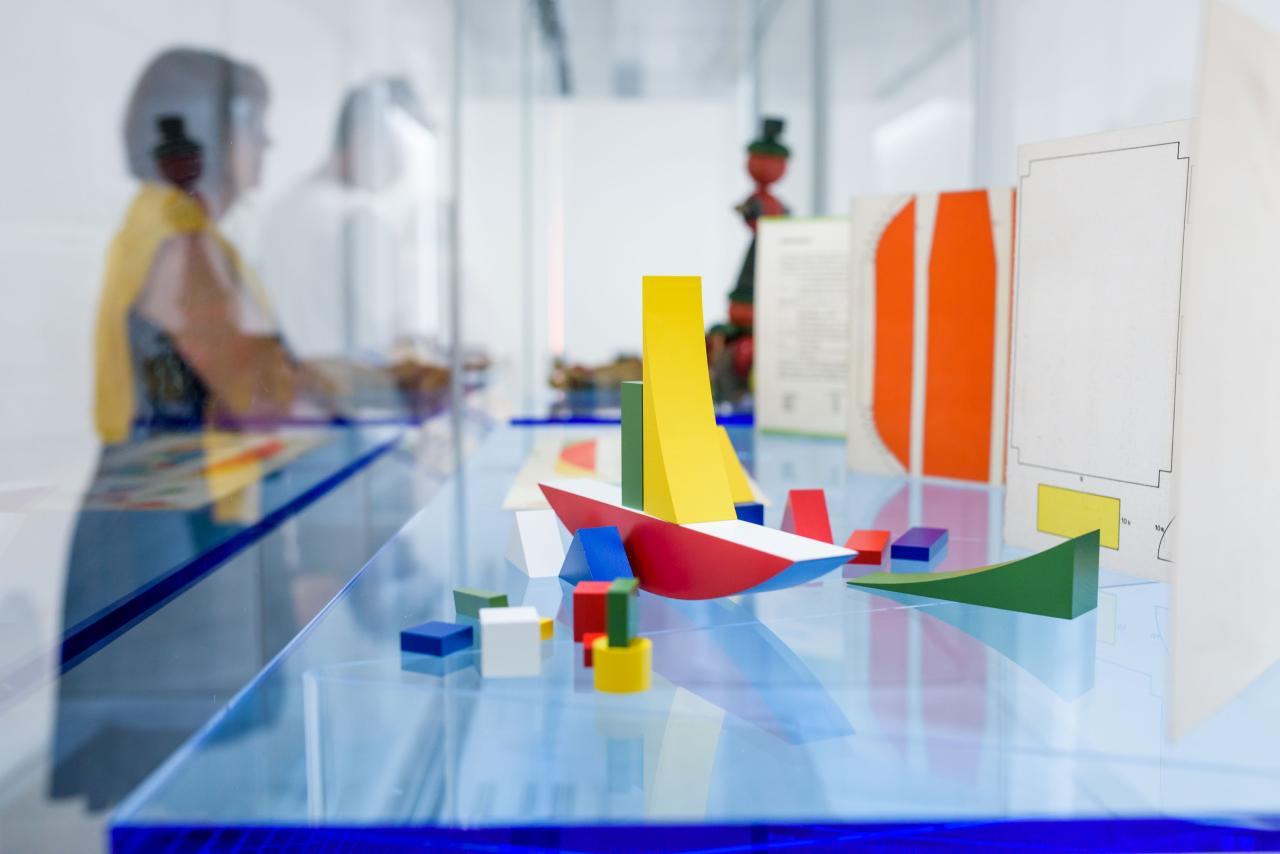
Shipbuilding play by Alma Siedhoff-Buscher at the Bauhaus-Museum Weimar ©Candy Welz, Klassik Stiftung Weimar
Like another world
The museum evokes a host of different impressions in its visitors. Some are rather cool and abstract, some are all too human and emotional – but all are very personal. It is a vast Bauhaus experiment across the ages. Drifting between the worlds of then and now, visitors keep learning new things. There are many aspects to the Bauhaus. Some you may like, others not so much. There’s an urge to join in the dance on the huge virtual stage, to turn the well-designed doorhandles one after the other, or to copy the churches from Feininger’s painting on canvas with a paintbrush. Tip: There is a section on the second floor of the exhibition where visitors can try out replicas of the different chairs designed by Marcel Breuer and his fellow artists.
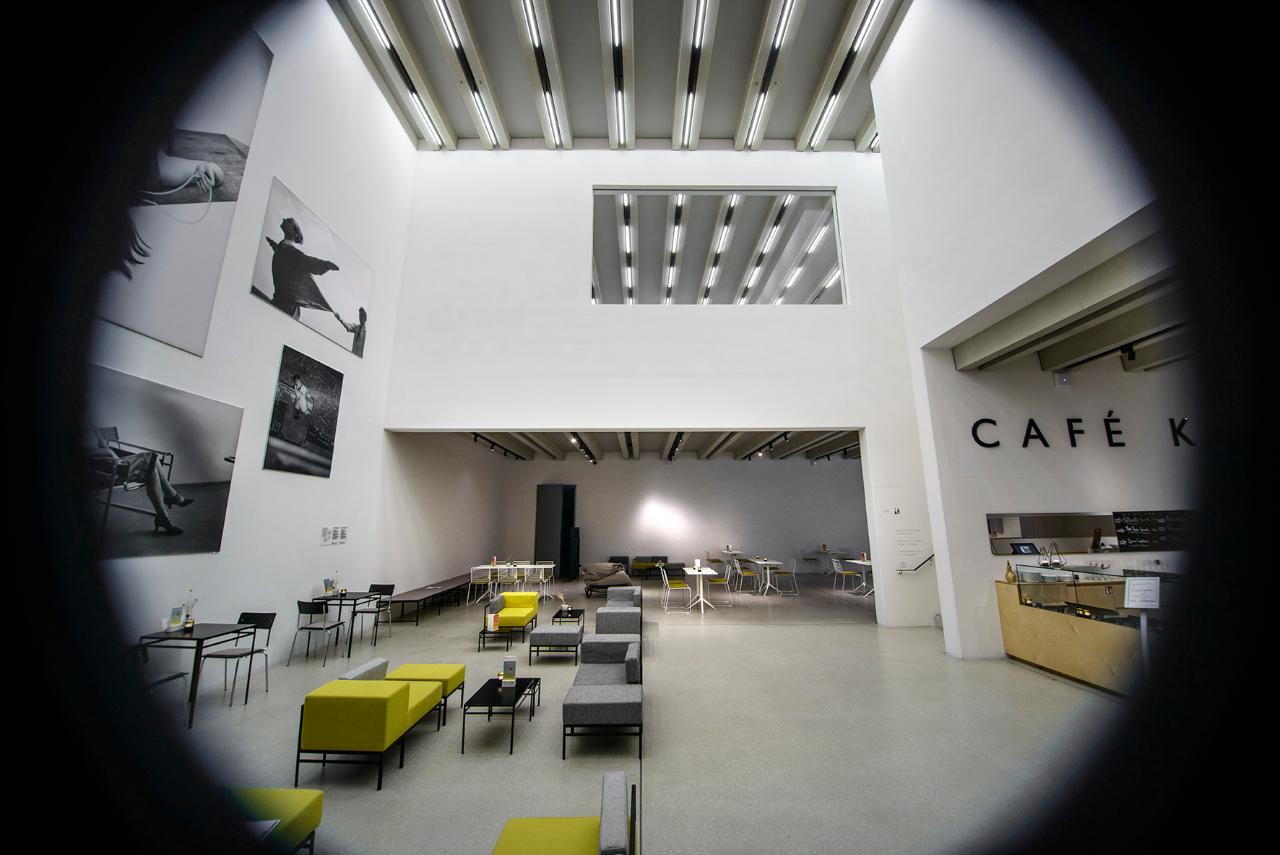
Insight into the Café Kunstpause ©Stephan Consemüller, Klassik Stiftung Weimar/Bauhaus-Museum Weimar, Dauerleihgabe Privatbesitz, Berlin, mit freundlicher Genehmigung von Wulf Herzogenrath, CLAUS BACH ® PHOTOGRAPHY
Having explored all of the fascinating exhibition spaces, visitors float back to the ground floor on the magnificent cascading staircase. Then it’s time to put their smartphone guide back into their pocket and surface from their own personal Bauhaus world, much like a bird that lands gently and safely on a green field after a long flight. The museum’s small Kunstpause café is the perfect place for visitors to restore their energies with a cup of coffee and a piece of cake while watching the hustle and bustle in the adjacent Weimarhallen Park, or listening to the muted conversation at the next table as they arrive back in the hectic actual present of their own lives.
Header picture ©Dominik Saure, Thuringia Tourism Board
Accessibility
Did you like this story?
You might also be interested in ...






